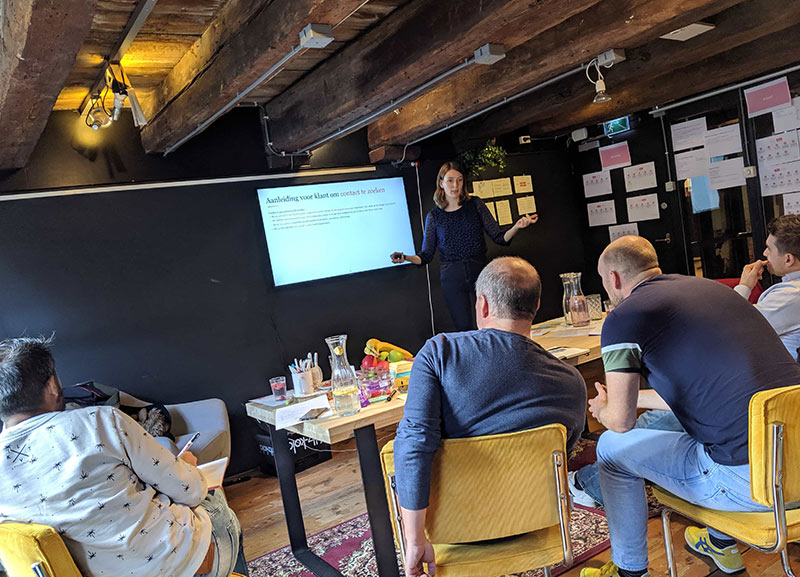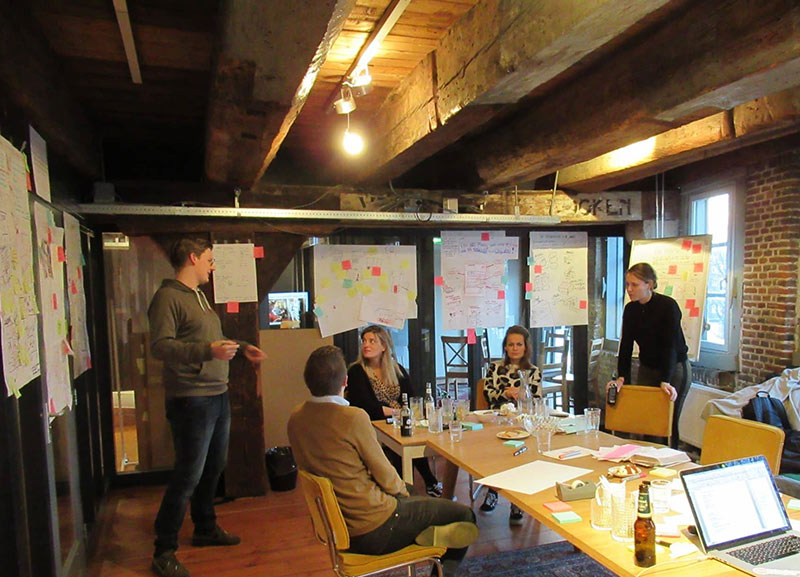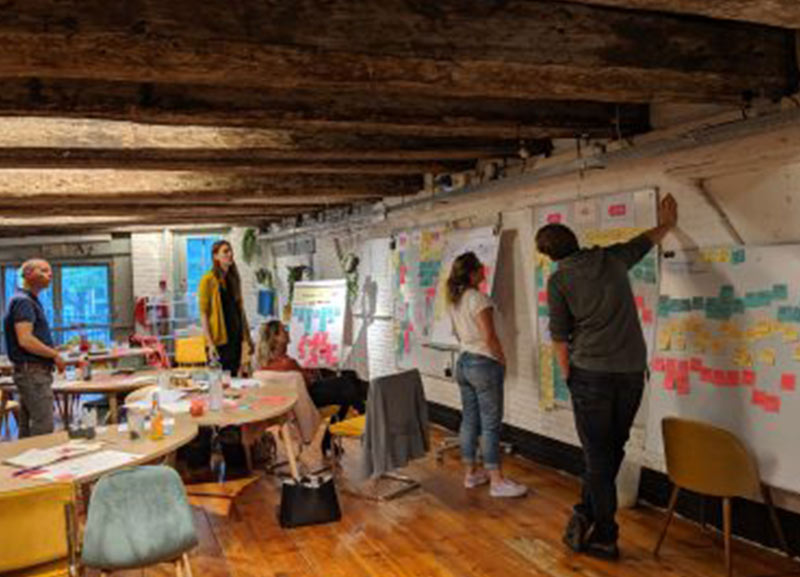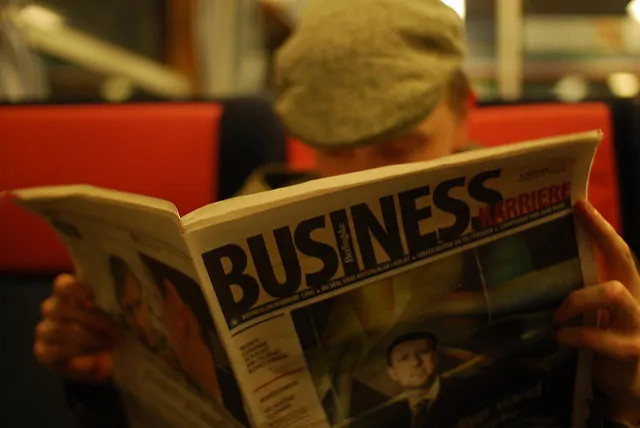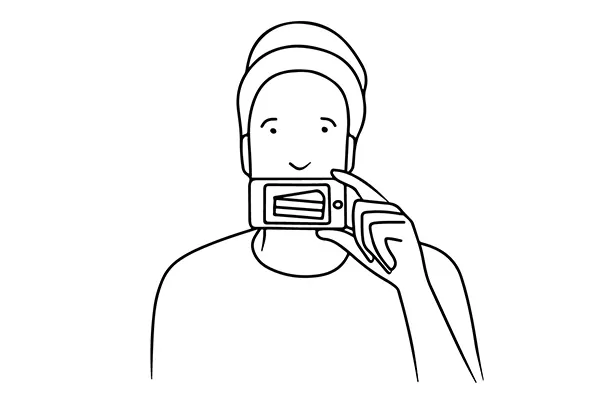
In this blog post, we will highlight the main concepts from the work of Nobel prize winner Richard Thaler as explained in his bestselling book ‘Nudge.’ We will explain what nudging is all about, how it related to behavioural economics and how you can use it to influence people and help them make better choices.
Nudging: what does it mean?
The term nudging seems to be popping up everywhere nowadays. People are being nudged, nudge units are set-up within governments, and nudging in marketing seems to pick up in popularity. But what is nudging all about? What does nudging mean? And from which underlying science does it derive? And especially how does it help people make better choices? Questions that will all be answered in this article. To make your reading life easier, we’ve divided the article into several subsections, which you can jump to easily:
Nudging Theory and Behavioural Economics
Making choices: Choice architecture
Making better and healthy choices
Recap
Nudging theory and behavioural economics
Nudging comes from the field of behavioural economics. Although behavioural economics is a science that is studied for almost forty years, it was the book ‘Nudge’ written by Richard H. Thaler and Cass R. Sunstein in 2008 that put nudging on the map. In Nudge, Thaler and Sunstein propose us a new take on decision making, one that takes our humanness and all the inconsistent decisions we make as a given.
Behavioural economists, as opposed to traditional economists, take human irrationality as a starting point. The basic assumptions of behavioural economics are that people are making choices with:
- Limited rationality
- Limited willpower
- Bounded self-interest
Nudging: traditional economics vs. behavioural economics
Whereas traditional economics see people as rational beings, who make decisions and do cost/benefit analyses to make a choice that is always in their best interest not letting their emotions cloud their judgments, and always thinking about the future. Behavioural economists overthrow this, as it doesn’t fit the actual behaviour of people. You see people choose mortgages they shouldn’t be taking. You see people overspent on their credit cards. There are stock bubbles. Where’s the rationality in that? We are humans whose decisions are driven by cognitive bias and sub-conscious mental shortcuts, as we explain in this post on Daniel Kahneman whose research laid the foundation of all behavioural economics.
In the book ‘Nudge’ is also explained that being human, we all are susceptible to various biases that can lead us to blunder. Our mistakes make us poorer and less healthy; we often make bad decisions involving education, personal finance, health care, mortgages and credit cards, the family, and even the planet itself.
The main concept of the book is that if you know how people think, you can design choice environments that make it easier for people to choose what is best for themselves, their families, and their society. It’s all about choice architecture. An important concept that we’ll explain in the next paragraph.
But before we dive deeper into choice architecture, it’s good to know that there lies a very important concept underneath the nudging theory. A concept introduced in the book called Libertarian Paternalism.
- Libertarian = An individual’s right to choose
- Paternalism = Do what you can do to improve the welfare of people. Point people in the right direction.
The definition of a nudge
The idea is to apply the techniques of the psychology of decision making and behavioural economics to improve decisions without limited choices. Or easier put, help people make better choices for themselves without restricting their freedom of choice. But by nudging them. Which brings us to the definition of a nudge. As Thaler describes it himself:
A nudge is any small feature in the environment that attracts our attention and alters our behaviour.
You can nudge for good, or you can nudge for evil. Their book strongly focuses on the first, as the subtitle of their book states: improving decisions about health, wealth, and happiness. And we as a company take a positive take on behavioural psychology ourselves as we strongly live by our mission to unlock the power of behavioural psychology to nudge people into making positive choices in work, life, and play. But how do you achieve this goal? That’s what the next section is all about: how to help people make better and healthy choices.
Do you want to learn how to nudge behaviour?
Then the Fundamentals Course is perfect for you! You'll catch up on the latest behavioural science insights and will learn how to translate these into nudges that will trigger positive behaviours and help people make better decisions. We have created a brochure that explains all the ins and outs of the Fundamentals Course; feel free to download it here.
Nudging is choice architecture
If you want to help people making better decisions, you can achieve this with better choice architecture. But what is a choice architecture? Anyone who designs the environment in which people make choices is a choice architect. There’s choice architecture all around you. Think about menus, curriculums, or store layouts that decide how you walk inside a store (you probably all have been in an Ikea once, there it’s obvious how choice architects have designed the way you cruise the Scandinavian furniture epicenter).
A choice architect makes choices about how to present information or an environment for you. Although nudging is all about maintaining people’s freedom of choice, choice architecture isn’t neutral. You can compare it to regular architecture; it’s not possible to design regular neutral architecture. Think about the design of the building you’re probably in right now: it’s not possible to have designed that building completely neutral. It had to have doors, stairs, etc.
Choice architecture is not neutral.
The same goes for choice architecture, it affects how people make choices, and you have to make a choice yourself on how you present a choice. Richard Thaler often refers to the example of cafeteria meal planning. They found out that the way food was presented to kids in a school cafeteria effected what they would eat for lunch. The first choice presented to them was the prevalent choice. Someone responsible for the cafeteria then has several options:
- Put the healthy options first, to promote more healthy eating behaviour
- Start with the unhealthy options, to make kids more fat (could be he/she has a chubby kid and wants other kids to gain weight too, to stop the bullying)
- Go for the most profitable as first option, to make the finance director happy
- Present the food randomly, which is also a choice (confusing, but a choice)
The point is: you always have to make a choice. Choice architecture is not neutral. But some designs are better than others. Why not do it in a way that makes people feel better? That’s what nudging is all about, and which is the theme of the book ‘Nudge’ to help people towards making better choices.
Nudging: making better and healthy choices
In the book ‘Nudge’ they explain six principles of good choice architecture that will help people make better and healthy choices:
Incentives
People make better decisions if you provide the right people with the right incentives. This goes beyond monetary and material incentives, but also includes psychological benefits (eg peace of mind).
Understand mappings
A warm plea is made for more disclosure to help people make better decisions. In the book referred to as RECAP: Record, Evaluate, and Compare Alternative Prices. Make it easier for customers to compare what they are truly paying for, and ensure that all hidden fees are exposed.
Defaults
Defaults what happens if we do nothing. Think about your screensaver. Even if you do nothing it will activate. Defaults are sticky, as inertia rules in all humans. We tend to stick to the automatic choice that’s made for us. We for example hardly ever change factory settings on our phone. In Nudge an example is given about joining a retirement savings plan. If the default is to join, most people do join. If you have to actively choose to join only 30% does so.
Give feedback
A good way to help humans improve their decision making is to provide feedback. A good example is the Ambient Orb as developed by Clive Thompson that helped people save energy. Electricity isn’t visible, the ambient orb gives feedback on how well you’re doing by changing colour. Another example of giving feedback is paint that is pink when you apply it, but turns white within an hour. People often paint white ceilings white again, and it’s hard to see if you missed a spot. By making the paint pink, it gives you immediate feedback on what is left to paint.

nudging ambient orb

Magic white paint
Expect error
Expect people to make mistakes and design for it. A very good example of libertarian paternalism that actually saves lives are the ‘look right’ signs in London streets. You can still watch the wrong way, but you’re directed to look the right way.
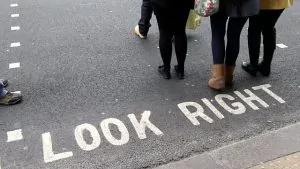
nudging look right
Structure complex choices
When there’s an overload on choice, people tend to find ways to simplify them and break them down. Good choice architecture will find ways to make this more evident for people. An example cited was the choice of paint. Instead of using words like “Roasted Sesame Seed” or “Kansas Grain,” consider arranging similar colour themes next to each other. This could help people to choose the right shades and hues.
Recap
You could recap the Nudge theory like this:
-
Humans are imperfect we can use all the help we can get
-
It’s possible to improve choices without restricting options
-
Don’t use bans and mandates, just nudge.
If you want to hear Richard Thaler explain the basic concept of nudging himself, take a look at this video. It’s 18 minutes.
BONUS: free ebook 'How to Convince Someone who Believes the Exact Opposite?'
Especially for you we've created a free eBook 'How to Convince Someone who Believes the Exact Opposite?'. For you to keep at hand, so you can start using the insights from this blog post whenever you want—it is a little gift from us to you.
How do you do. Our name is SUE.
Do you want to learn more?
Suppose you want to learn more about how influence works. In that case, you might want to consider joining our Behavioural Design Academy, our officially accredited educational institution that already trained 2500+ people from 45+ countries in applied Behavioural Design. Or book an in-company training or one-day workshop for your team. In our top-notch training, we teach the Behavioural Design Method© and the Influence Framework©. Two powerful tools to make behavioural change happen in practice.
You can also hire SUE to help you to bring an innovative perspective on your product, service, policy or marketing. In a Behavioural Design Sprint, we help you shape choice and desired behaviours using a mix of behavioural psychology and creativity.
You can download the Behavioural Design Fundamentals Course brochure, contact us here or subscribe to our Behavioural Design Digest. This is our weekly newsletter in which we deconstruct how influence works in work, life and society.
Or maybe, you’re just curious about SUE | Behavioural Design. Here’s where you can read our backstory.








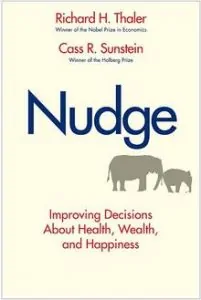

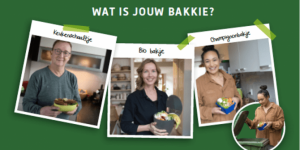 We felt we were on the right track with the ‘bin issue’. By discussing this issue more deeply in brainstorms, by physically analyzing our own kitchens and by adding some common sense (where would you be without), we concluded that every kitchen has só many potential organic waste ‘bins’: a pot used during cooking, an empty little mushroom box, an empty salad bowl. In other words, simply every kitchen object where you can put organic waste in will do (I don’t recommend using a little girl’s lunchbox, my daughter didn’t appreciate it).
We felt we were on the right track with the ‘bin issue’. By discussing this issue more deeply in brainstorms, by physically analyzing our own kitchens and by adding some common sense (where would you be without), we concluded that every kitchen has só many potential organic waste ‘bins’: a pot used during cooking, an empty little mushroom box, an empty salad bowl. In other words, simply every kitchen object where you can put organic waste in will do (I don’t recommend using a little girl’s lunchbox, my daughter didn’t appreciate it).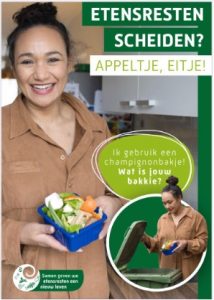
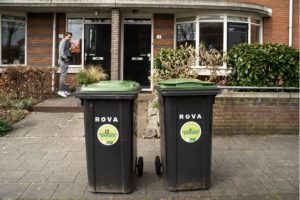 Also, we designed a so-called ‘wheelie bin bingo’. All citizens of Amersfoort with a green wheelie bin (for organic waste) received a brochure in their postbox. This brochure contained, amongst other things, information about the importance of separating waste and tips & tricks regarding the right way to do it. But it also included a sticker upon which people had to write down their house number. By pasting their sticker on their green wheelie bin, all citizens were automatically enrolled in the periodic ‘green wheelie bingo’ (having a chance to win modest but fabulous prizes).
Also, we designed a so-called ‘wheelie bin bingo’. All citizens of Amersfoort with a green wheelie bin (for organic waste) received a brochure in their postbox. This brochure contained, amongst other things, information about the importance of separating waste and tips & tricks regarding the right way to do it. But it also included a sticker upon which people had to write down their house number. By pasting their sticker on their green wheelie bin, all citizens were automatically enrolled in the periodic ‘green wheelie bingo’ (having a chance to win modest but fabulous prizes).